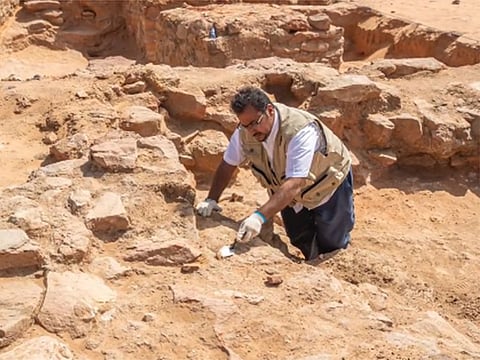Saudi heritage commission discovers ancient artefacts in Al Tweer dating back to 300 BC
Archaeological excavations at Al Tweer reveal 2300-year-old structures and utilities

Dubai: The Heritage Commission of the Saudi Ministry of Culture has uncovered artefacts at the Al Tweer archaeological site in Sakaka, a city in the Al Jawf region in northwest Saudi Arabia, dating back to between 300 BC and 100 AD.
The Heritage Commission announced the completion of the first season of the archaeological excavation project at Al Tweer. The artefacts unearthed include architectural phenomena, water sources that were used for residential and agricultural activities, and the remnants of what is believed to be a watchtower or a religious facility.
These structures and utilities date back to a period between 2300 and 1900 years ago, offering a glimpse into the life and culture of the inhabitants during that era.
Among the most notable finds are an unfinished camel model made from pottery, various pottery vessels, and coins made of bronze and sandstone, all estimated to be around 2,300 years old.
Earlier this month, the Royal Commission for AlUla (RCU) unveiled a 200,000-year-old axe dating back to the Paleolithic Age at the Qurh site in AlUla Governorate.
The axe made from durable soft basalt stone measures 51.3cm in length and exhibits distinctive features suggesting its use for cutting or chopping purposes.
Sign up for the Daily Briefing
Get the latest news and updates straight to your inbox



